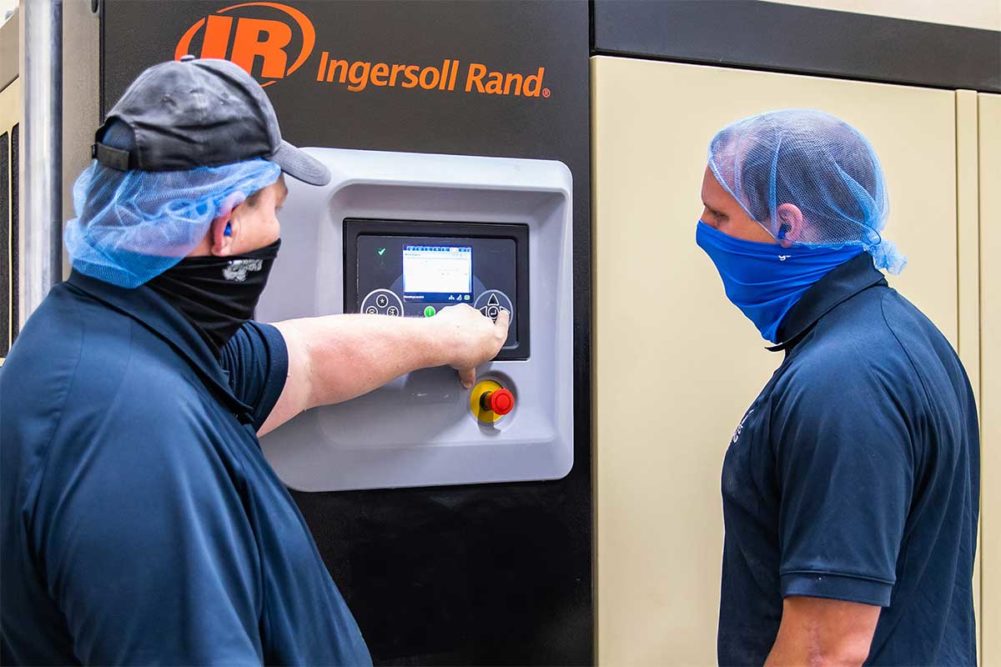Bakeries interested in finding ways to reduce energy consumption without spending a lot of money can consult the Energy Treasure Hunt Guide, which can be found on the Energy Star website. It categorizes treasure hunts into four phases: preparation, pre-training, the onsite event and follow-up.
Although facilities can become more energy efficient through small and large capital projects and procurement — such as renegotiating utility supply contracts or upgrading lighting — treasure hunts are designed to help companies save energy through low-cost or no-cost projects. As with any successful project, careful planning is a must.
“To do it, you’re going to have to take some time and schedule it,” said Walt Tunnessen, Energy Star industrial sector manager at the US Environmental Protection Agency (EPA). “Which bakery should we look at? Who needs to be involved? When do we do it? What’s the best time to do it?”
Finding energy efficiencies also takes a certain amount of expertise. For smaller bakeries in which managers may wear several hats, this can be daunting.
“One of the things I ran into was the number of people we had who understood what we were looking for was zero,” said Billy Delaney, environmental health and safety manager for New Horizons Baking Co., Norwalk, Ohio.
In 2017, Mr. Delaney was tasked with reducing energy and wastewater by 20% at the company’s Norwalk plant. He started asking people for advice and guidance. He consulted the Energy Star spreadsheet for the Energy Star Challenge and started calculating the gas and electricity energy use in the plant.
“I got a metric to measure it against by their recommendation, which was by units, and figured out how many units we needed for a basic pack of a dozen muffins,” he said. “When we did that, the spreadsheet started giving us data results, so we had a baseline year.”
To achieve the Energy Star Challenge, bakeries must reduce their energy intensity by 10% within five years. The Norwalk plant’s baseline year was 2018, and by the end of 2019 and beginning of 2020, the bakery had far exceeded the challenge, reducing energy by 34.4%.
Energy savings are not a one-size-fits-all proposition. It should make sense for each bakery’s site and business culture, Mr. Tunnessen said. For instance, the Energy Treasure Hunt guide proposes using three teams in the hunt, taking three days to conduct it and starting on a nonoperational day, unless it’s a 24/7 operation, then finishing it when the plant is up and running. But it can all be scaled for each operation.
“You may be good with one team,” he said. “You may be able to do it in one day or a day and a half. Sometimes you will look at the whole plant, sometimes people say they’re going to look at part of the plant. There’s no orthodoxy that it has to be done a certain way.”
Preparation before the treasure hunt should include creating an agenda, assembling teams and resources, and collecting and analyzing data, among other steps.
Energy Star has several online resources, including videos, to help companies.
Bakeries can reach out to consultants and others to lend a hand as a lack of expertise is a barrier for many bakeries to conduct an energy hunt.
“Sometimes utilities have energy professionals so bakeries should ask if the utility could send someone to participate,” Mr. Tunnessen said. “By engaging the utility person in that treasure hunt, they might also be able to tell you if there are rebates, such as for lighting upgrades or if they have a custom incentive program that could be used to upgrade your motors on your mixers, or things like that.”
Equipment vendors can also be used as consultants, especially when dealing with more complicated equipment like chillers or ovens with a lot of controls, Mr. Tunnessen said. Bakers will also need to develop opportunity detail sheets, which are forms that summarize a potential energy-saving measure.
Energy Star has developed a treasure map, which can be found online, for manufacturing plants to direct them to the best places to find savings, and they even have specialized maps for certain industries.
“We’ve talked to the American Bakers Association (ABA) about developing a treasure map for bakeries,” Mr. Tunnessen said. “Last year, we didn’t pursue it because of COVID. The timing wasn’t right to bring people together to talk about that. But it is something we would like to try to do with ABA for bread and roll and cookie and cracker bakeries.”
This article is an excerpt from the July 2021 issue of Baking & Snack. To read the entire feature on Energy Management, click here.






